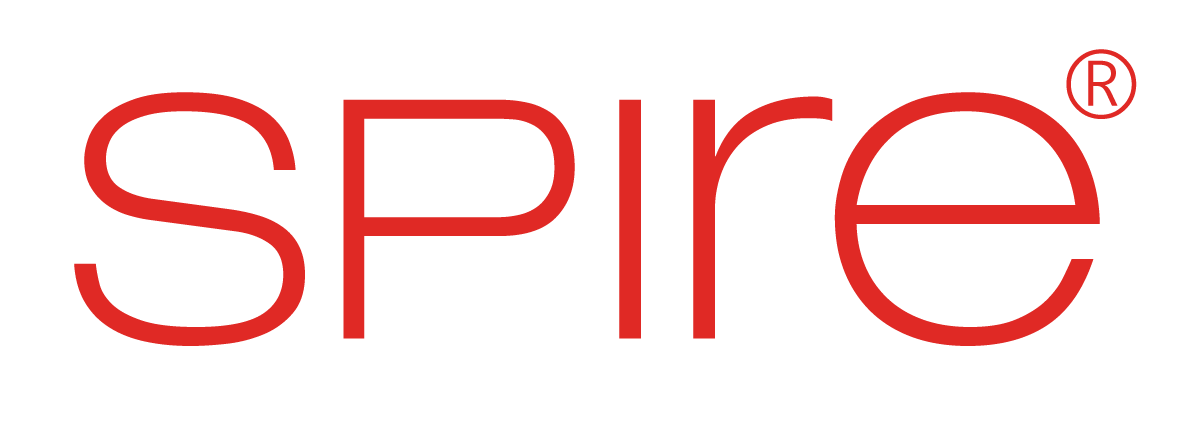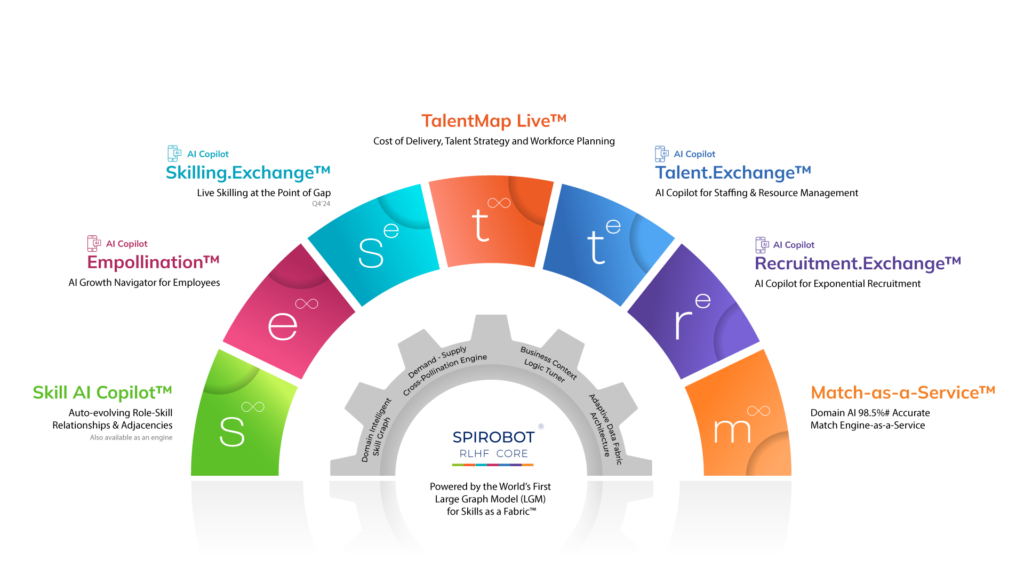Chief Human Resources Officers (CHROs) increasingly recognize that traditional role-based workforce models no longer meet the demands of modern business. Job titles, degrees, and tenure alone fail to capture the full scope of an employee’s potential. Instead, a skills-first approach emerges as a transformative way to align talent strategies with business objectives.
With AI-driven technologies, HR leaders can now identify, map, and develop the right skills for workforce agility and long-term success. This article explores how CHROs can leverage AI to implement a skills-first strategy, ensuring workforce resilience, business agility, and sustainable growth.
Why a Skills-First Approach is Essential for Workforce Success
Organizations can no longer afford to rely solely on traditional hiring models based on degrees and job titles. The rapid acceleration of automation, digital transformation, and evolving job roles necessitate a skills-first approach, one that emphasizes competencies over formal qualifications.
A McKinsey study found that 87% of executives report experiencing skill gaps in their workforce or anticipate them soon, yet only 28% feel prepared to address the issue effectively. This alarming gap underscores the need for a strategic shift toward skills-based workforce planning.
The Key Benefits of a Skills-First Approach
Implementing a skills-first strategy delivers substantial advantages for organizations striving to remain competitive.
- Increased Workforce Agility: By prioritizing skills over rigid job structures, organizations can swiftly adapt to industry disruptions.
- Stronger Talent Acquisition: Employers expand their hiring pool by focusing on skills rather than requiring specific degrees or job titles.
- Enhanced Internal Mobility: Employees can transition more fluidly across roles, reducing turnover and improving career growth opportunities.
- Greater Diversity, Equity, and Inclusion (DEI): Skills-based hiring minimizes biases related to educational background and experience, promoting workplace inclusivity.
- Higher Productivity and Cost Efficiency: Organizations that invest in upskilling and reskilling their employees avoid costly external hiring and talent shortages.
By leveraging AI-driven solutions, CHROs can quantify, analyze, and optimize workforce skills, ensuring their organizations are equipped to meet future demands.
How AI Enables a Skills-First Strategy
Implementing a skills-first workforce strategy requires sophisticated data analysis and predictive capabilities. AI enables HR teams to assess, categorize, and align workforce skills with business needs, ensuring a dynamic talent ecosystem. Here’s how AI plays a pivotal role.
AI Enabling a Skills-First Strategy
– AI-Powered Skills Taxonomy Development
– Intelligent Workforce Planning
– AI-Powered Hiring and Internal Mobility
– AI-Driven Personalized Learning & Upskilling
AI-Powered Skills Taxonomy Development
A skills-first approach requires a robust skills taxonomy that continuously evolves to reflect industry trends and organizational needs. AI helps HR leaders:
- Analyze Job Descriptions: Extract key competencies required for different roles, eliminating redundant requirements.
- Assess Employee and Candidate Profiles: Use AI to map hidden skills that may not be explicitly stated in resumes or past job experiences.
- Integrate External Market Data: Compare internal skill sets against evolving industry requirements to future-proof the workforce.
Companies like IBM use AI-driven skills frameworks to standardize skill definitions across job roles and industries, ensuring workforce planning remains relevant and scalable.
Intelligent Workforce Planning
AI-driven workforce planning tools allow CHROs to,
- Identify Skill Gaps: Analyze current workforce capabilities and predict future needs based on business strategy.
- Enhance Learning & Development (L&D) Programs: Align employee training with real-time skill demands, ensuring continuous upskilling.
- Optimize Hiring Strategies: Focus on acquiring skills that are scarce within the organization rather than relying solely on experience-based hiring.
According to Gartner, companies leveraging AI-driven workforce planning see a drastic improvement in talent retention and workforce productivity.
AI-Powered Hiring and Internal Mobility
AI is reshaping the hiring process by shifting the focus from past job titles to actual competencies.
- Assess Candidates’ Skills Objectively: Move beyond resume keyword matching and use AI-based evaluations.
- Match Employees to Emerging Roles: Identify internal candidates for new opportunities based on skill potential, not just past roles.
- Automate Screening & Ranking: Rank candidates based on their competency fit rather than outdated hiring criteria.
A LinkedIn report found that most HR professionals believe AI will help reduce hiring biases and improve workforce diversity.
AI-Driven Personalized Learning & Upskilling
AI enhances workforce development by offering personalized learning recommendations tailored to an individual’s career trajectory.
- Identifying Individual Skill Gaps: AI-based assessments map out areas where employees need improvement.
- Providing Adaptive Learning Content: Platforms suggest customized courses based on job roles and skill proficiencies.
- Measuring Skill Progression: AI provides real-time insights into training effectiveness and workforce skill readiness.
Companies that use AI-powered L&D programs see higher employee engagement and higher productivity rates.
By integrating AI into workforce management, CHROs can unlock unprecedented levels of efficiency, agility, and strategic talent deployment, ensuring their organizations remain competitive in an increasingly skills-driven economy.
Developing a Skills-First Workforce: A Strategic AI-Driven Approach
Creating a skills-first workforce requires a comprehensive, AI-driven strategy that aligns talent development with business objectives. CHROs can follow these strategic pillars to drive workforce transformation.
1. Establish a Skills-Based Talent Framework
- Develop an AI-powered skills taxonomy and role-skill architecture to classify competencies across the organization.
- Continuously update and refine skill mappings to align with emerging industry trends and organizational objectives.
AI-powered skills architecture revolutionizes workforce development through dynamic competency mapping, seamless talent mobility, and data-driven learning paths, creating an agile organization that adapts to tomorrow’s demands.
2. Leverage AI for Talent Acquisition & Mobility
- Use AI-powered matching systems to connect candidates with opportunities based on skills rather than job titles.
- Promote internal mobility by offering employees greater visibility into alternative career paths and skill-building opportunities.
3. Deploy AI-Enabled Learning & Development
- Implement personalized AI-driven learning platforms to ensure continuous workforce upskilling.
- Measure the ROI of L&D programs by tracking skill development data and business impact in real time.
4. Measure and Iterate Using AI Analytics
- Leverage AI-based workforce analytics to refine hiring, retention, and upskilling strategies dynamically.
- Adapt HR policies based on insights derived from real-time skill data, ensuring long-term workforce resilience.
By implementing this AI-driven skills-first strategy, CHROs can future-proof their workforce, drive innovation, and maintain a competitive edge in the evolving talent landscape.
Real-World Impact: AI in Action
Case Study 1: Spire.AI Driving Skills-Based Transformation
Spire.AI is at the forefront of helping enterprises transition into skills-based organizations using its advanced AI-driven solutions. By leveraging Domain AI and Role-Skill Architecture, Spire.AI enables organizations to,
- Develop dynamic role-skills architecture that continuously evolves with industry demands.
- Automate workforce planning by intelligently mapping internal workforce capabilities to emerging job roles.
- Optimize talent acquisition through AI-driven skill assessments that ensure the right talent is placed in the right roles.
- Enhance learning and development programs by curating personalized upskilling pathways based on real-time skills insights.
One of Spire.AI’s enterprise clients successfully reduced hiring time by 40% and improved workforce productivity by 35% through AI-powered internal mobility solutions, demonstrating the significant impact of adopting a skills-first strategy.
By integrating Spire.AI’s solutions, organizations can build a future-ready workforce that is agile, skilled, and aligned with business objectives, ensuring long-term success in an evolving job market.
Case Study 2: Unilever’s AI-Powered Skills-First Transformation
Unilever adopted an AI-based skills-first talent strategy to enhance workforce agility. The company implemented AI-driven platforms to,
- Map employees’ skills and identify hidden talent within the organization.
- Automate job recommendations, increasing internal mobility.
- Personalize learning programs, leading to a reduction in skill gaps.
This approach resulted in higher employee engagement, faster role fulfillment, and a more resilient workforce.
The Competitive Advantage of AI-Driven Skills-First Strategies
Organizations that adopt an AI-driven skills-first approach gain a substantial competitive edge in talent management, workforce planning, and business agility. As industries increasingly rely on digital transformation, prioritizing skills over traditional job-based hiring ensures long-term workforce sustainability.
According to the World Economic Forum, 50% of employees will require reskilling by 2025 due to automation, and organizations that fail to prioritize skill-based talent strategies risk losing key talent and lagging in market competitiveness.
Key Advantages of AI-Driven Skills-First Strategies
HR leaders who integrate AI into their workforce strategies can,
- Reduce Hiring Time: AI-powered talent acquisition tools streamline candidate evaluations, matching applicants based on core competencies rather than outdated resume screening techniques.
- Increase Retention Rates: Employees engaged in continuous learning and career mobility programs are more likely to stay within organizations, reducing turnover costs and increasing loyalty.
- Improve Workforce Productivity: AI-enhanced workforce planning ensures employees are placed in roles that maximize their skill potential, enhancing efficiency and overall job satisfaction.
- Proactively Address Skills Gaps: AI analytics allow HR teams to identify emerging skill shortages and implement upskilling programs before workforce capabilities become obsolete.
- Enhance Diversity and Inclusion Efforts: A skills-first hiring approach reduces unconscious biases linked to traditional education and work experience, promoting a more diverse and equitable workforce.
By integrating AI-driven insights into HR decision-making, CHROs can future-proof their organizations, create high-performing teams, and ensure business continuity in the face of evolving industry demands.
The organizations that embrace a skills-first model today will be the workforce leaders of tomorrow, effectively navigating economic shifts, technological advancements, and competitive pressures while maintaining workforce agility and sustainability.
Spire.AI: Transforming Organizations into Skills-Based Enterprises
Spire.AI provides advanced AI-driven solutions that empower organizations to transition into a skills-based workforce.
1. Domain AI
Spire.AI’s Domain AI maps skills across industries, providing organizations with deep insights into industry trends and emerging skill requirements. This AI-driven technology allows HR teams to proactively identify workforce needs, ensuring that employees and candidates possess the capabilities necessary to drive business success.
- Analyzes external market trends and internal workforce data to predict future skill demands.
- Helps organizations stay ahead of technological advancements and evolving industry landscapes.
- Enables proactive workforce planning by aligning business objectives with skills development.
2. Role-Skill Architecture
Spire.AI’s Role-Skill Architecture provides a structured framework that aligns workforce capabilities with evolving business needs. Instead of rigid job descriptions, this framework creates dynamic job roles based on real-time skill requirements, ensuring the workforce remains adaptable and resilient.
- Defines role-specific competencies and continuously updates them based on AI-driven insights.
- Ensures employees are placed in roles that best utilize their skills and career aspirations.
- Supports the creation of cross-functional teams that can quickly adapt to new challenges.
3. Internal Mobility Solutions
Spire.AI’s Internal Mobility Solutions provide AI-driven insights that facilitate seamless career transitions within an organization. By identifying employees with the right skills for new opportunities, Spire.AI empowers HR leaders to improve retention and career progression.
- Uses AI-powered analytics to match employees with new internal opportunities based on their skills.
- Encourages continuous career development, reducing turnover and enhancing employee satisfaction.
- Strengthens succession planning by identifying high-potential talent for leadership roles.
4. Intelligent Workforce Planning
With predictive analytics, Spire.AI enables businesses to address skill gaps before they become critical. The platform helps HR and talent leaders build data-driven talent strategies that align workforce capabilities with long-term business goals.
- Identifies workforce trends and potential disruptions before they impact productivity.
- Helps organizations make informed decisions on hiring, reskilling, and workforce deployment.
- Enhances workforce planning by predicting future labor market changes and skill shortages.
5. AI-Powered Learning and Development
Spire.AI’s AI-driven Learning and Development solutions personalize upskilling and reskilling programs based on employee skills, career aspirations, and industry trends.
- Creates personalized learning pathways to ensure continuous employee development.
- Aligns training programs with business needs, improving workforce adaptability.
- Provides real-time insights into skill acquisition and training effectiveness.
The Impact of Spire.AI on Skills-First Organizations
By leveraging Spire.AI’s Domain-Intelligent automation and AI-powered insights, organizations can,
- Accelerate their transition to a skills-first approach by continuously evolving their talent strategy.
- Reduce workforce skill gaps by proactively upskilling and reskilling employees based on predictive analytics.
- Optimize talent deployment by ensuring employees are placed in roles that maximize their potential and drive business growth.
- Future-proof their workforce by staying ahead of industry disruptions and emerging skill demands.
Spire.AI’s comprehensive suite of solutions ensures that enterprises can build an adaptable, competitive, and future-ready workforce, setting the foundation for sustained business success.
Conclusion: The Time to Act is Now
Embracing a skills-first approach is a strategic imperative for organizations looking to remain competitive in an increasingly technology-driven economy. AI solutions provide HR leaders with the tools to identify, develop, and deploy skills effectively, ensuring their organizations stay ahead of workforce demands.
CHROs who leverage AI for skills-based workforce management will drive talent excellence, foster business growth, and create resilient organizations. Now is the time to act.






